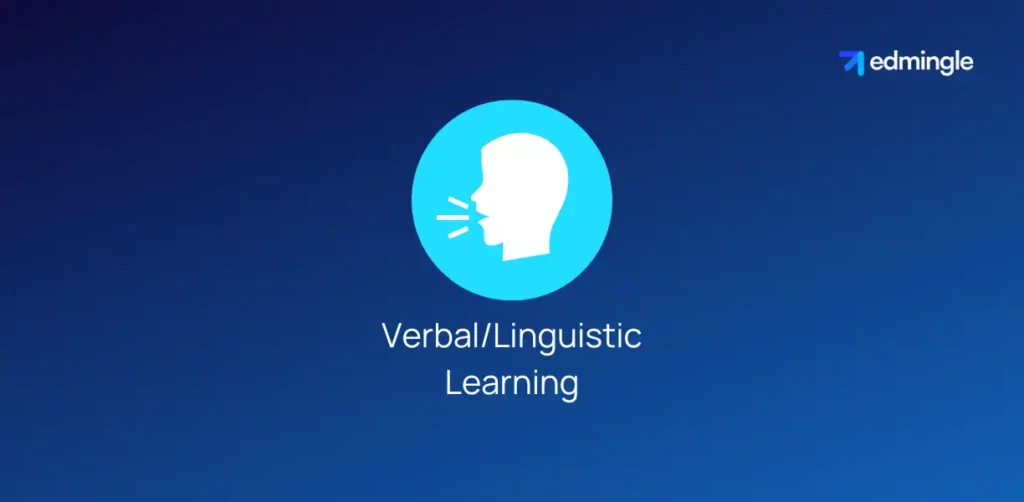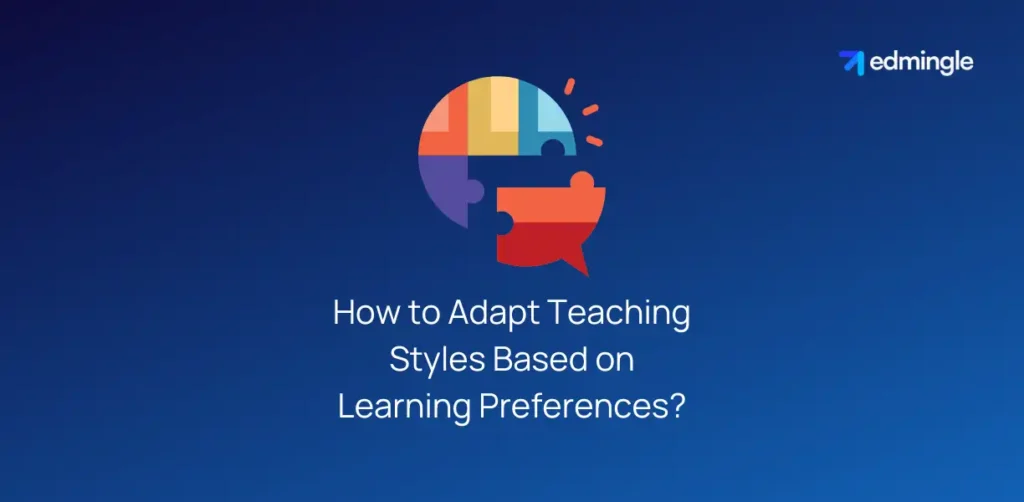
In a world brimming with information, understanding how we learn best is crucial for effective education.
The landscape of learning has evolved & it accommodates a myriad of student learning styles and preferences today.
From classrooms to boardrooms and from textbooks to LMS platforms. It’s a journey into how individuals perceive, process and retain information.
Throughout this guide, we will explore 9 major learning styles with their significance. So without further wait, let’s dive in.
What does Learning Style mean?

It refers to a learner’s preferred method/approach of acquiring, processing & retaining information.
It also covers the ways in which people perceive, comprehend & engage with educational material. These can vary widely among individuals and are influenced by certain factors.
Also read about the difference between learning and training.
Why is Understanding Learning Styles Important?

Understanding this allows educators & trainers to tailor educational experiences. In a way, that it matches the diverse preferences and strengths of learners.
As a result of this, we can enhance comprehension, retention and engagement. Ultimately fostering more effective training outcomes.
Moreover, this promotes accessibility & inclusivity. By enabling individuals with different preferences to thrive in educational and professional settings.
It also empowers educators to design more personalized and impactful strategies. While encouraging collaboration & teamwork and equipping learners with self-awareness.
9 Important Factors Affecting Learning Styles
As we mentioned earlier, these can vary widely among individuals. Here are the 9 important factors affecting these styles.
| 1.Cognitive preferences: Individual differences in how people process information. | 2.Sensory modalities: Variations in how individuals prefer to receive and perceive information. |
| 3.Environmental influences: External factors such as classroom setup, lighting, noise & seating arrangements. | 4.Cultural background: Cultural norms, values & traditions can influence aspects. Such as communication styles, learning process, pace and social interactions. |
| 5.Personal experiences: Past experiences can influence individuals’ attitudes. | 6.Emotional factors: Such as motivation, confidence, stress & anxiety can influence attention, concentration & processing abilities. |
| 7.Social dynamics: Interpersonal interactions, peer relationships, group dynamics and collaborative experiences. | 8.Neurological differences: Variances in brain structure and functioning can affect aspects. Such as attention span, memory capacity and information processing speed. |
| 9.Learning environment: The environment, whether formal (classroom-based) or informal (self-directed). As well as the availability of resources and support mechanisms. | |
In short, the factors affecting the way we learn & retain ranges from minute details to deep ones. It’s essential to notice these in order to deliver better education.
Read more about the “age of attention-deficit”. In our blog on mastering 3 training models – offline, online & hybrid with Edmingle.
9 Major Types of Learning Styles

Understanding the various types is essential for creating effective educational experiences. All while tailoring educations to individual preferences and strengths.
Here, we’ll explore 9 major learning styles. All while observing how individuals perceive and process information.
1.Visual/Spatial

Visual learners excel in visualizing information & understanding space connections. They prefer learning through images, charts, diagrams and other visual learning aids. This style is common among artists, architects and designers.
2.Auditory/Aural/Audio

Auditory learners absorb information best through sound & verbal communication. They prefer lectures, discussions, podcasts and audiobooks. The aural learning style is often associated with musicians, language learners and oral communicators.
Also read about LMS for language teaching.
3.Verbal/Linguistic

Verbal learners have a strong affinity for words and language. These linguistic learners excel in reading, writing, speaking and debating. The verbal learning style is prevalent among writers, poets and public speakers.
4.Kinesthetic/Physical

Kinesthetic learners learn best through hands-on activities, experiences and movement. They prefer activities such as experiments, role-playing, sports and interactive simulations. This style is common among athletes, dancers and artisans. These types of learners are also known as tactile learners.
Check out our blog: “Balancing Screen Time with Hands-On Learning“.
5.Reading/Writing

Reading/writing learners thrive in textual environments, where they can absorb & produce written information. They prefer reading books, writing essays, taking notes and engaging in written exercises. This style is often associated with scholars, researchers and avid readers.
6.Logical/Analytical

Logical learners excel in reasoning, analysis and problem-solving. They prefer structured & systematic approaches. While enjoying activities such as puzzles, logic games and critical thinking exercises. This style is common among scientists, engineers and mathematicians.
7.Social/Interpersonal

Social learners thrive in group settings and value collaboration, communication & interaction with others. Interpersonal learners prefer group discussions, team projects and cooperative activities/skills. This style is prevalent among teachers, counselors and community leaders.
Also read about how social learning in LMS platforms drive learner engagement & retention.
8.Solitary/Intrapersonal

A solitary learner prefers solitary activities and introspection. They enjoy self-paced, independent study and reflective practices such as journaling & meditation. This style is often associated with writers & researchers.
9.Natural/Nature

Nature learners have a deep connection with the natural world & learn best in outdoor environments. They prefer activities that involve nature exploration, observation, and environmental conservation efforts. This style is common among biologists, environmentalists and outdoor enthusiasts.
In short, the style depends totally on learners. Decoding individual learning styles might seem challenging. But once you understand their point-of-view, it gets easier.
How to Adapt Teaching Styles Based on Learning Preferences?

Just like a learner, trainers and teachers too have a teaching style. This adaptation is essential for creating inclusive & effective environments.
Here are some step-by-step strategies to help this adaptation:
- Step 1: Begin by assessing the styles of your students through observation. You can even host informal assessments or gather self-reported preferences.
- Step 2: Incorporate a variety of teaching strategies to cater to different styles. Implement the preferred mode of learning as mentioned in the 9 types above.
- Step 3: Present information in multiple formats to appeal to different preferences. For example, combine verbal explanations with visual demonstrations and hands-on experiences.
- Step 4: Engage students in active learning experiences that encourage participation and interaction. This could include group discussions, collaborative projects, problem-solving activities and experiential learning opportunities. –Read about active vs passive learning in our Medium article.
- Step 5: Provide learners with options for how they prefer to learn and demonstrate their understanding. Allow for choice in assignments, projects & activities.
- Step 6: Offer individualized support and feedback to students based on their styles and needs. Recognize & validate different preferences and offer additional resources or accommodations.
- Step 7: Foster a supportive and inclusive culture where students feel comfortable. This way, they can express their learning preferences and seek assistance when needed.
- Step 8: Regularly assess the effectiveness of your teaching methods. And adjust based on learner feedback and performance.
By adapting teaching styles accordingly, educators can create engaging, accessible & enriching experiences. One that empowers all students to succeed.
Conclusion
In conclusion, understanding this topic isn’t just a matter of academic curiosity. But a fundamental aspect of effective education and personal growth.
We explored the 9 major learning styles crucial for empowering students. In harnessing their unique strengths & unlocking their full potential.
Learning is a lifelong, ever-evolving journey. And at the same time, not confined to the pages of a textbook or the walls of a classroom.
Remember that the path to knowledge is as varied as the individuals who walk upon it.
FAQs on Styles of Learning
1.Which is the best learning style for all students?
The best style varies from student to student. Based on individual preferences, strengths and goals. What works well for one may not be as effective for another.
2.How can learners identify their preferred learning style?
Learners can reflect on past learning experiences, both positive and negative. To identify what learning methods/approaches have been most effective for them. Additionally, they can observe how they naturally engage with information. Experimenting with different techniques also helps them discover what resonates best.






Leave a Reply